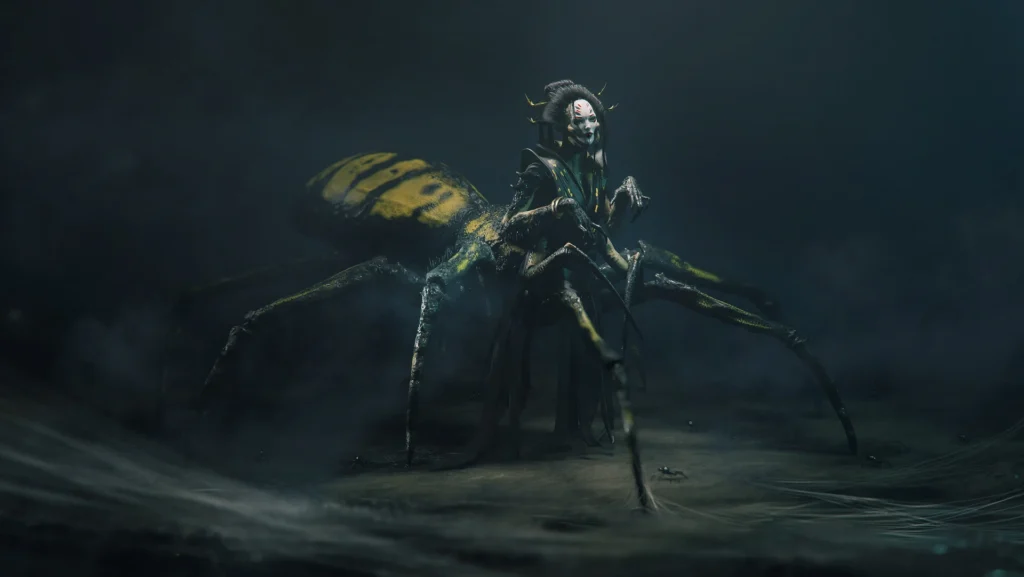
Image credits:deviantart.com
The jorōgumo is a fascinating yet unsettling creature from Japanese folklore. Known as the “binding bride” or “prostitute spider”, the jorōgumo is a supernatural spider woman who lures men to their doom using her beauty and powers of seduction.
With origins in ancient Japanese legends, the jorōgumo endures as a prominent figure in Japanese art, literature, and culture. She embodies the dual nature of femininity – tantalizingly beautiful yet mysteriously dangerous.
As a yokai – a class of supernatural monsters, demons, and spirits in Japanese folklore – the jorōgumo encapsulates both desire and fear about women’s hidden “true nature”.
The Jorōgumo as a Seductress and Man-Eater
One of the most chilling aspects of the jorōgumo is her reputation as a deadly seductress and man-eater.
According to folklore, the jorōgumo uses her beauty and feminine wiles to lure unsuspecting men into her clutches. Once ensnared by her seduction, the helpless men are trapped in her web and devoured.
The jorōgumo’s modus operandi is to disguise herself as a beautiful woman to attract prey. When men approach, unable to resist her allure, she reveals her true spider form and attacks. After trapping men in her strong silken spider webs, she winds her threads around them and bites into their flesh, savagely devouring them.
This highlights the jorōgumo as a representation of the dangerous side of female sexuality. She embodies the male anxiety that a woman’s beauty and charm can conceal dark, ravenous desires.
Paintings sometimes depict the jorōgumo as a courtesan, prostitute, or mistress, underscoring this link to carnal appetite and the destruction it can wreak on men.
RELATED: read why Jorogumo was on the list of scariest mythical creatures.
The Jorōgumo as a Shapeshifter
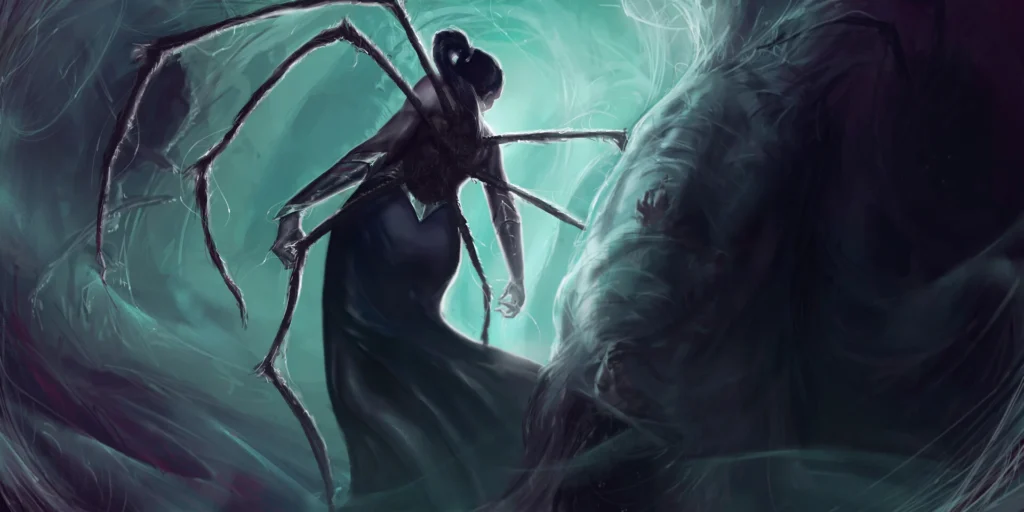
Image credits:deviantart.com
The jorōgumo’s ability to change shape also adds to her mystique and danger. As a supernatural shapeshifter, she can transform from a giant spider into a beautiful woman in order to attract prey.
This links her to other shapeshifting yokai like kitsune and tanuki who similarly disguise their true nature.
Once close enough to unsuspecting men, the jorōgumo reverts back to her spider form in order to attack and bind her victims in her web.
Her seamless ability to shift between a seductive temptress and a bloodthirsty spider underscores her duplicity and treachery.
She embodies the belief that women hide their real intentions and cannot be trusted.
Symbolism and Meaning of the Jorōgumo
Beyond her literal hideous appearance and man-eating ways, the jorōgumo carries deeper symbolic meaning in Japanese culture.
She represents female dominance and control, upending traditional Japanese gender roles by preying on men.
As a spider woman, she weaves complex webs to entrap men, symbolizing feminine plots, schemes, and cunning. Her violation and consumption of male victims emphasizes the power she wields over men through her sexuality.
The jorōgumo is an example of the “femme fatale” archetype, embodying both hypnotic beauty and lethal danger.
She is a cautionary tale warning men about the two-faced nature of some dangerous women and seductresses. Viewed in this light, she represents men’s fear of losing power and control to the wiles of women.
Yet she can also symbolize the strength and agency of women refusing to play by the rules of a patriarchal society.
The jorōgumo uses her sexuality to violate norms and dominate men who underestimate her. From this perspective, she is a disruptive figure who threatens male power.
The Jorōgumo in Japanese Art and Culture
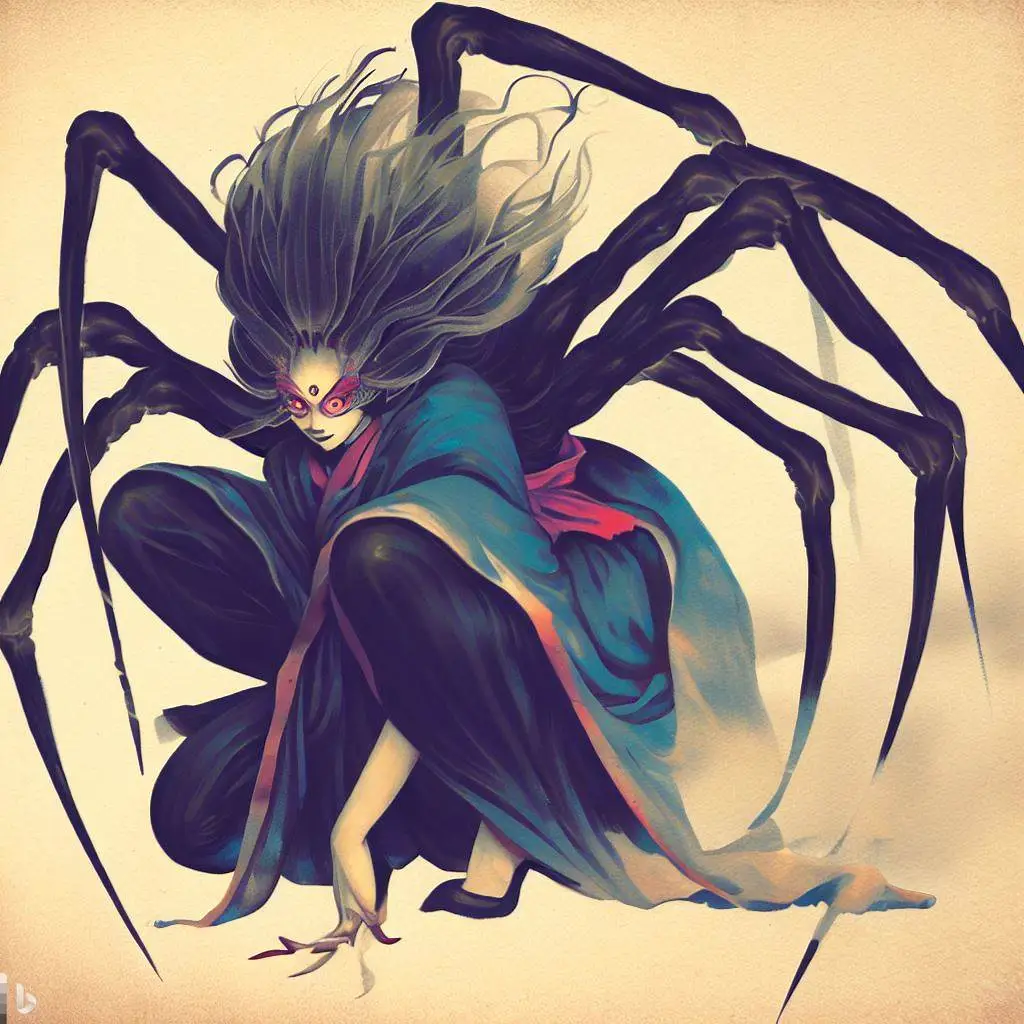
The jorōgumo appears frequently in Japanese art and literature, solidifying her enduring cultural impact.
In Japanese ukiyo-e woodblock prints, she is often depicted as a beautiful but ominous spider woman. Sometimes she is shown mid-transformation from alluring temptress to animalistic monster. These prints visualize the jorōgumo’s central theme of concealed danger.
The jorōgumo also stars in classic Japanese ghost story compilations like Kaidan, cementing her status as a horror icon. More recent manga, anime and films featuring characters modeled on the jorōgumo prove her archetype continues to inspire the imagination.
Modern creators remix and reinvent the seductive but deadly spider woman theme in their narratives, showing its timeless appeal.
Notable Jorōgumo Characters
While jorōgumo myths feature anonymous spider woman yokai, some specific jorōgumo characters have emerged over time:
- The Tsuchigumo clan in the manga/anime Naruto have jorōgumo-inspired powers.
- Tsuchigomo in the video game Nioh is a massive jorōgumo boss.
- The Hell Girl anime features a jorōgumo who weaves mystical threads.
- The jorōgumo in the film Onmyoji is adapted from the classic folktale “Tale of the Bandit Nezumi Kozo”.
These examples demonstrate the longevity of the jorōgumo legend and its flexibility as a character archetype.
The Legacy of the Jorōgumo Legend
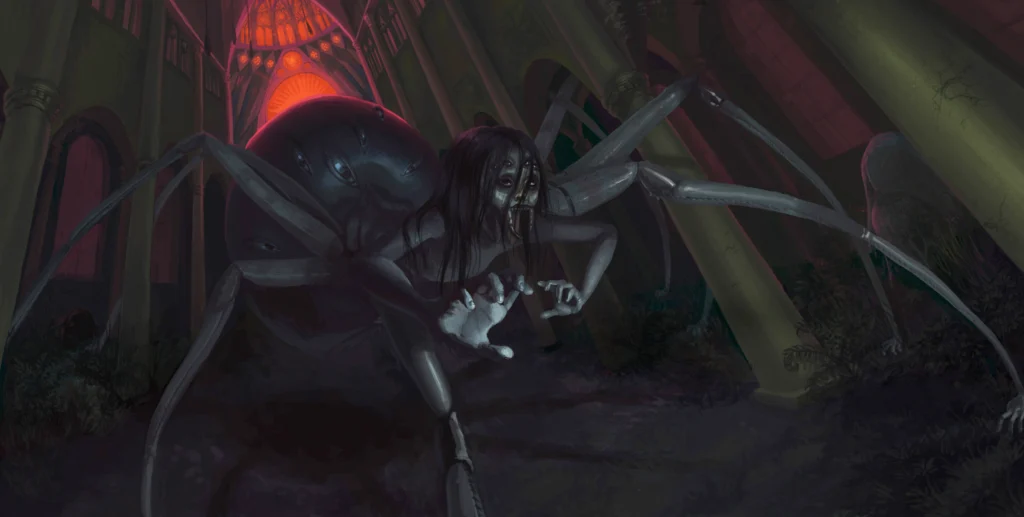
Image credits:deviantart.com
The jorōgumo’s long history in Japan attests to her lasting cultural impact. As a dangerous yet compelling yokai, her story has enthralled Japanese imaginations for centuries.
She exemplifies the dual symbolism of women as paragons of beauty as well as objects of fear and control. The jorōgumo epitomizes the link between desire and destruction, using her sexuality as a weapon.
While past depictions used her to reinforce patriarchal norms, the jorōgumo now also inspires stories that celebrate transgressive female power. This spider woman continues to spin her intricate web in Japanese pop culture and folklore.
FAQs about Jorogumo
What is a jorōgumo?
A jorōgumo is a supernatural spider woman or yokai in Japanese folklore known for seducing and preying on men. Their name translates to “binding bride” or “prostitute spider”.
What does jorōgumo mean?
Jorōgumo literally means “binding bride” or “whore spider” in Japanese, referring to their feminine wiles and spider-like deadliness. The name highlights their nature as dangerous seductresses.
Is the jorōgumo good or evil?
The jorōgumo is usually portrayed as evil, maliciously seducing and killing men who are powerless to resist her. However, some modern stories portray jorōgumo as more nuanced or even heroic.
What powers does the jorōgumo have?
Jorōgumo are shapeshifters who can transform from spider to beautiful woman. They use seduction, beauty and spider webs to ensnare men.
How is the jorōgumo depicted?
Classically she is shown as a half-spider, half-woman yokai who kills men. Often depicted as a seductive but evil femme fatale archetype in art and folklore.
Conclusion
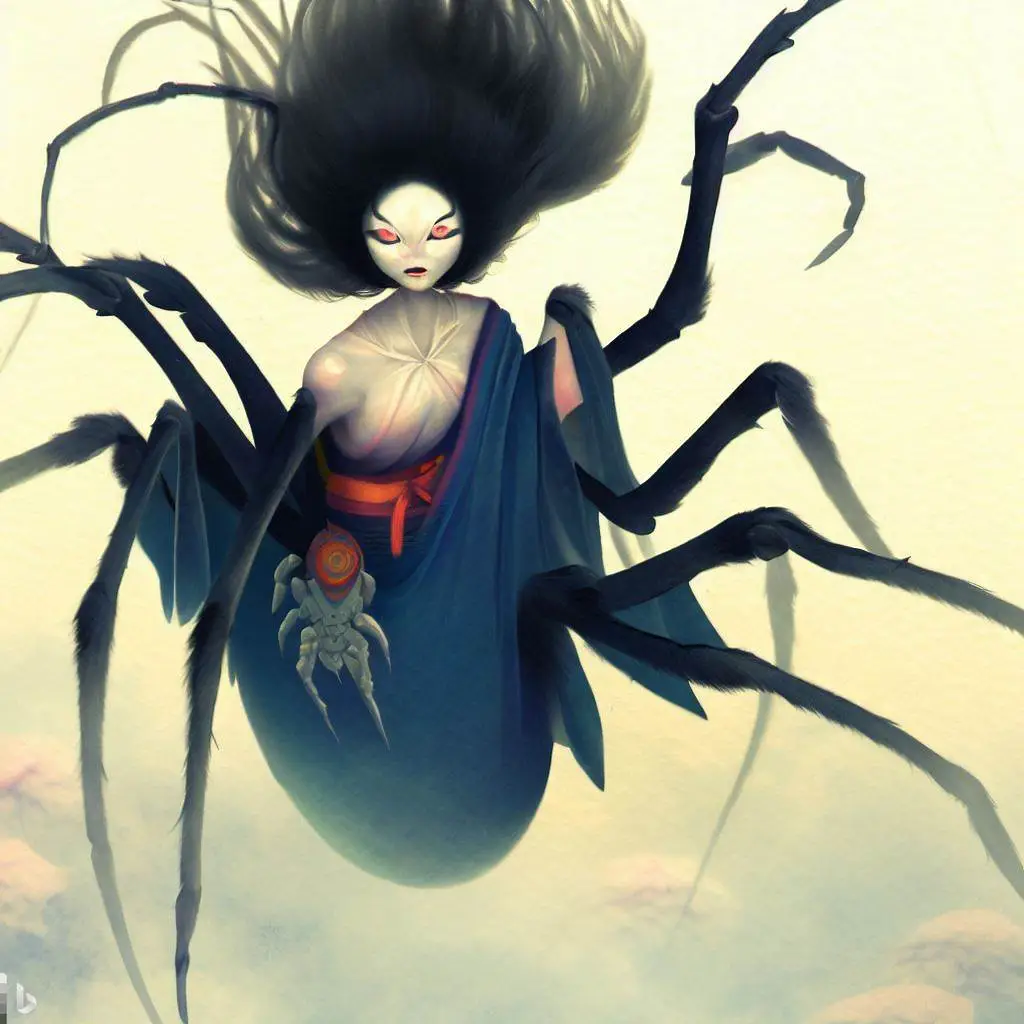
As a vampiric seductress and venomous spider bent on destroying men, the jorōgumo embodies both captivating beauty and lurking terror.
She remains a provocative figure who exposes both male desires and fears about women’s sexuality and power.
The jorōgumo continues to spin her web as a multi-faceted symbol of feminine mystique in Japanese culture.

